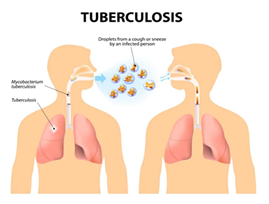

29th March 2023 (8 Topics)
Context
India has become the first country in the world to estimate the Tuberculosis (TB) burden in-country and launch its own mathematical system to estimate the disease burden.
About the Model:
- This model was constructed based on;
- The natural history of diseases,
- individual status of infection, disease,
- health care seeking, missed or correct diagnosis,
- Treatment coverage and outcomes including cure and death.
- The TB model was drawn up by using data from several sources, including the Nikshay portal of private sector drug sales, the sub-national certification system where the TB-free status of various States is estimated and ranked.
Status of TB in India:
- India’s TB incidence rate stands at 196 per 1,00,000 population, instead of the 210 estimated by the WHO, and the estimated deaths from the communicable disease stand at 3.20 lakh, instead of the 4.94 lakh that was projected in 2021.
- The Health Ministry noted that as per this data, the global TB reduction numbers stand at 11% while the reduction in TB cases in India is 18%.
National TB prevalence survey 2019-21:
- The National TB Prevalence survey in India was conducted from 2019 to 2021 to know the actual disease burden of TB at a national level.
- The survey estimated the point prevalence of microbiologically confirmed pulmonary TB (PTB) among person’s ≥15 years in age in India at the national level and for 20 individual states / state groups.
- The survey also explored the health seeking behaviour and estimated the prevalence of TB infection.
- Key Findings:
- Delhi has the highest burden of all forms of TB and pulmonary TB — at 747 per 100,000 and 534 per 100,000 respectively.
- Gujarat has the lowest burden of all forms of TB at 137 per 100,000 while Kerala is the lowest in pulmonary TB at 151 per 100,000.
|
About TB:
|
National and international initiatives:
- National TB Elimination Programme (NTEP)
- National Strategic Plan (NSP) for Tuberculosis Elimination (2017-2025)
- The Nikshay Ecosystem (National TB information system)
- Nikshay Poshan Yojana (NPY- financial support)
- TB Harega Desh Jeetega Campaign
- TB Free India Campaign
- Revised National Tuberculosis Control Programme (RNTCP)
- International Union Against Tuberculosis and Lung Disease (The Union)
More Articles




